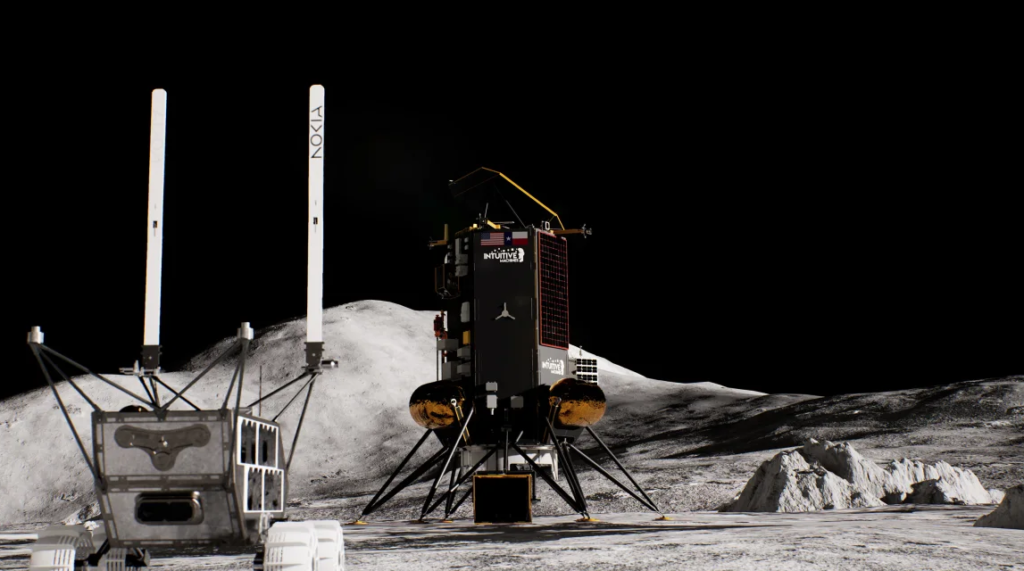|
Getting your Trinity Audio player ready...
|
Texting and streaming on the Moon may soon become a reality, thanks to a groundbreaking partnership between NASA and Nokia. The two entities have joined forces to establish a cellular network on the Moon, a pivotal step towards enabling long-term human presence on celestial bodies beyond Earth.
Launching the 4G Network
Scheduled for launch this year aboard a SpaceX rocket, the lunar cellular network will mark a significant milestone in space exploration. The 4G network, set to be deployed at the Moon’s south pole, will be remotely controlled from Earth following installation.
This ambitious project aims to overcome the challenges of establishing reliable communication infrastructure in the harsh lunar environment, where extreme temperatures and radiation pose significant obstacles.
Overcoming Technical Challenges
Walt Engelund, deputy associate administrator for programs at NASA‘s Space Technology Mission Directorate, highlighted the technical hurdles involved in setting up a space-qualified cellular network. The system must meet stringent requirements for size, weight, power, and durability to withstand the lunar conditions. Nokia‘s Bell Labs is spearheading the development of the 4G network unit, leveraging off-the-shelf commercial components to ensure reliability and performance.
Building the Network
The 4G network unit will be integrated into a lander provided by Intuitive Machines, a US-based aerospace company specializing in lunar missions. Two roaming vehicles equipped with specialized instruments, including the Lunar Outpost rover and Micro-Nova hopper, will explore the Moon’s surface and search for ice.
These vehicles will transmit images and data back to Earth in near real-time via the cellular network, providing valuable insights into lunar resources and terrain.
Ice Exploration and Communication
One of the primary objectives of the lunar mission is to locate and analyze lunar ice, a critical resource for future lunar exploration and habitation. The Lunar Outpost rover and Micro-Nova hopper will utilize advanced sensors and instruments to scan for ice deposits in lunar craters and regions.
The cellular network will facilitate the transmission of high-resolution images and scientific data, enabling researchers to study the composition and distribution of lunar ice.
Importance for NASA’s Artemis Program
Engelund emphasized the significance of cellular connectivity for NASA’s Artemis program, which aims to return astronauts to the Moon by the end of the decade. Advanced communication capabilities are essential for supporting high-resolution video, scientific data transmission, and astronaut communication. The establishment of a lunar cellular network will enhance mission efficiency and enable real-time collaboration between astronauts and mission control.
Future Implications
The lunar cellular network lays the groundwork for an off-world internet and could revolutionize space communications. Personal devices could connect to this network, enabling space colonists to access apps and services akin to those on Earth. This technological advancement paves the way for sustained human presence on the Moon and serves as a stepping stone for future missions to Mars and beyond.
Commercial and Earthly Applications
Beyond space exploration, the technology developed for the lunar network holds potential commercial benefits for Earthly ventures. Compact and resilient network equipment could find applications in remote deployments, industrial sites, emergency response, and defense.
The lessons learned from building and operating a lunar cellular network could inform the development of terrestrial communication infrastructure in challenging environments.
Conclusion
NASA and Nokia’s collaborative effort represents a significant leap forward in space technology, with implications ranging from lunar exploration to commercial innovation on Earth. As humanity ventures further into the cosmos, robust communication infrastructure will play a crucial role in shaping the future of space exploration and beyond.
The establishment of a cellular network on the Moon underscores the collective efforts of government agencies and private enterprises to expand humanity’s presence in the solar system and unlock the mysteries of the universe.
